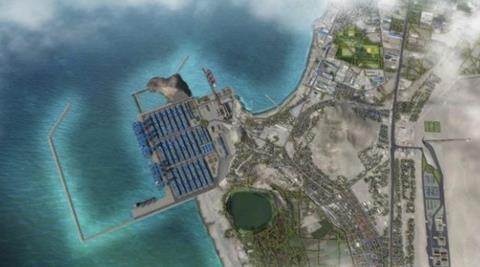Cosco’s new mega-port in Chancay and expansion of DP World’s terminals in Callao and Posorja will increase capacity and improve connectivity

Latin American fruit exporters are set to benefit from improved connectivity to global markets thanks to a raft of major infrastructure investment projects that will beef up port infrastructure on South America’s west coast.
Emirati-based logistics company DP World is making significant investments in its port terminals in Peru and Ecuador to improve capacity and operational efficiency. In the coming months, the company will inaugurate the Bicentenario Dock expansion project in its operations at the Port of Callao in Peru and the start of a dock expansion project at the Port of Posorja in Ecuador.
The first is a US$400m project to expand the dock to 1,050 metres, allowing it to accommodate up to three ships simultaneously and increase its annual capacity to 2.7m TEUs. DP World said it will increase capacity at its Callao’s terminal by 80 per cent, making it one of the leading logistics hubs on the west coast of South America.
The project will also see the installation of state-of-the-art electrical equipment and the first electric charging station for trucks in Latin America, promoting sustainable logistics solutions. Around 60 per cent of Peru’s containerised cargo passes through DP World Callao. In addition, DP World operates the Port of Paita in northern Peru.
In Ecuador, meanwhile, DP World is to expand its berth at the Port of Posorja, which recently improved its connectivity with global markets after being added to three key service routes from Maersk.
The US$140m project will expand the port to 700 metres of berthing space and integrate advanced port equipment.
Meanwhile, this November will see the opening of Chinese shipping company Cosco Shipping’s new US$3bn mega-port in Peru, designed to be the “gateway from South America to Asia” according to one Cosco executive. The Port of Chancay, located 65km north of Lima, will cut transit times between South America and Asia by several days and benefit not only Peru, but exporters in across the entire region. Its natural deep-water harbour and direct connection to the Pan-American Highway gives Chancay access to one of Peru’s most economically dynamic regions.
The port will have a draft of 17.8 metres (58 feet), allowing it to receive the biggest containerships in the world, carrying up to 24,000 containers. It will feature advanced technology including automated cranes and driverless trucks.
The first phase of the project is now over 83 per cent complete and the port is due to open in November, when Peru hosts the Asia-Pacific Economic Cooperation leaders’ summit.
The project hit choppy waters earlier this year, when the National Port Authority of Peru filed a lawsuit challenging Cosco’s status as exclusive operator of the port, demanding that the facility should be available to other companies offering services such as loading and unloading shipping containers.
However this week it was reported that Peru had withdrawn its request to revoke Cosco’s exclusive rights for the Chancay project ahead of a meeting between Peruvian president Dina Boluarte and Chinese premier Xi Jinping in China.






